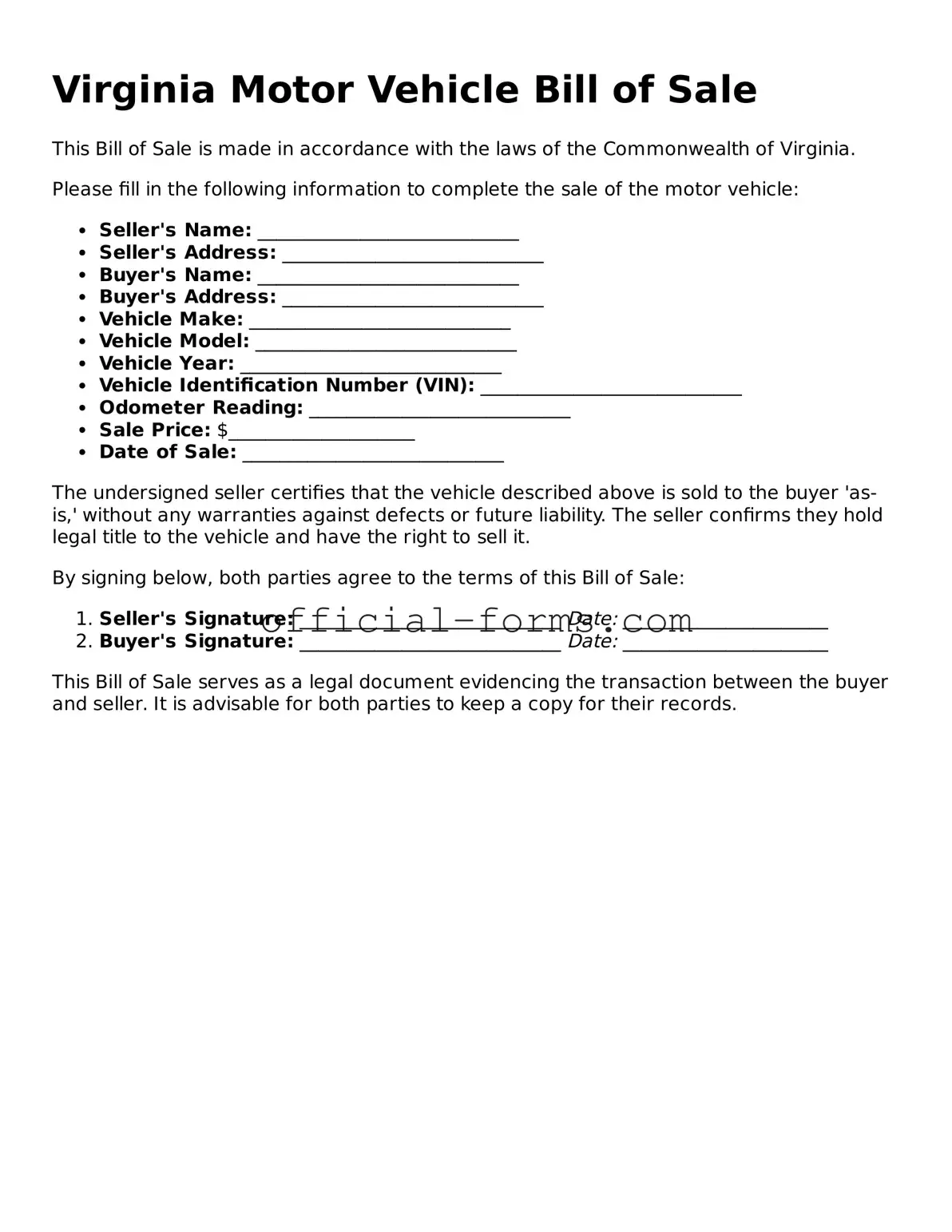Filling out the Virginia Motor Vehicle Bill of Sale form can seem straightforward, but many people make common mistakes that can lead to complications down the road. One frequent error is neglecting to include all required information. Essential details like the buyer’s and seller’s names, addresses, and signatures must be clearly stated. Without these, the document may not be considered valid.
Another common mistake involves incorrect vehicle information. It's crucial to ensure that the vehicle identification number (VIN), make, model, and year are accurately recorded. An incorrect VIN can create confusion and potentially lead to issues with the title transfer. Always double-check this information before submitting the form.
Some individuals forget to include the sale price or list it incorrectly. The sale price should reflect the agreed-upon amount between the buyer and seller. Leaving this blank or entering an inaccurate figure can complicate tax calculations and may lead to disputes later on.
Moreover, many people overlook the importance of signatures. Both the buyer and seller must sign the form to validate the transaction. Without these signatures, the bill of sale lacks legal standing. It’s a simple step, but one that is often forgotten in the excitement of the sale.
Another mistake to watch out for is not providing a date on the form. The date of the sale is significant as it marks the official transfer of ownership. Omitting this detail can cause confusion regarding when the transaction occurred, affecting everything from insurance to registration.
Lastly, some individuals fail to keep a copy of the completed bill of sale. This document serves as proof of the transaction and can be vital for both parties in case of any future disputes. Always make sure to retain a copy for your records, ensuring that both parties have access to the information if needed.
